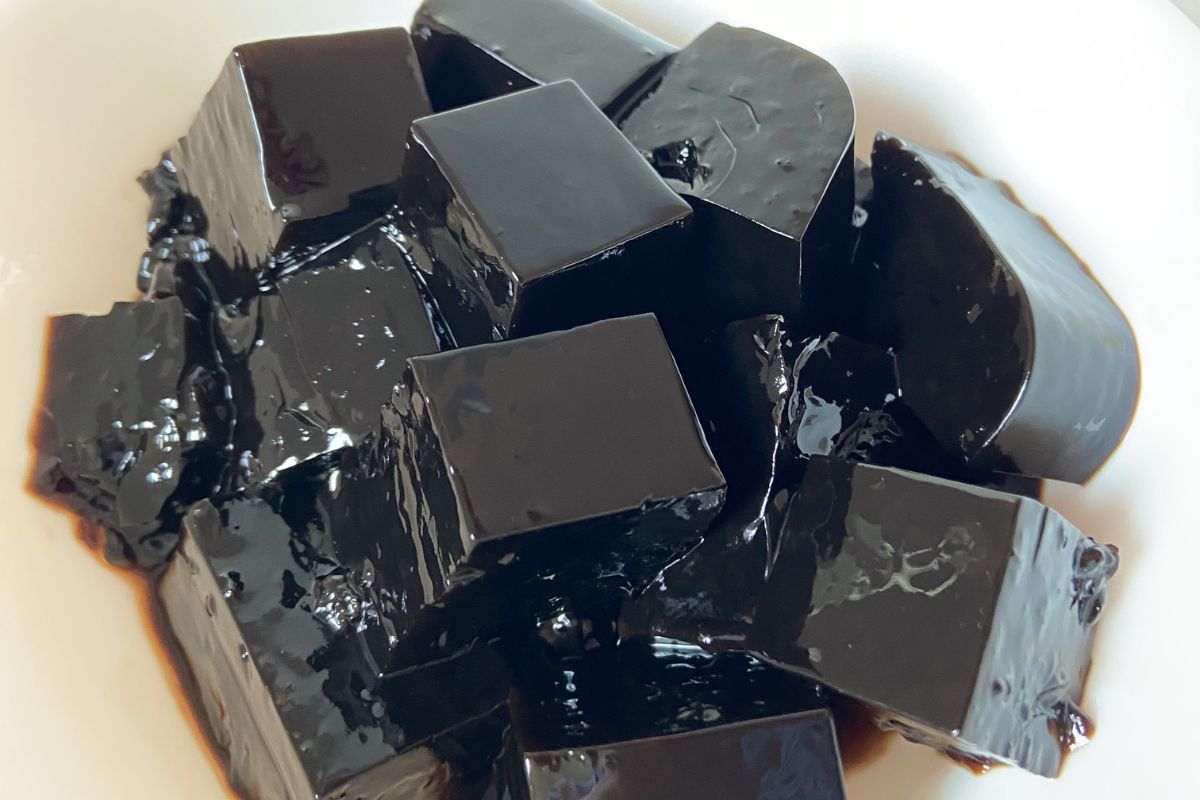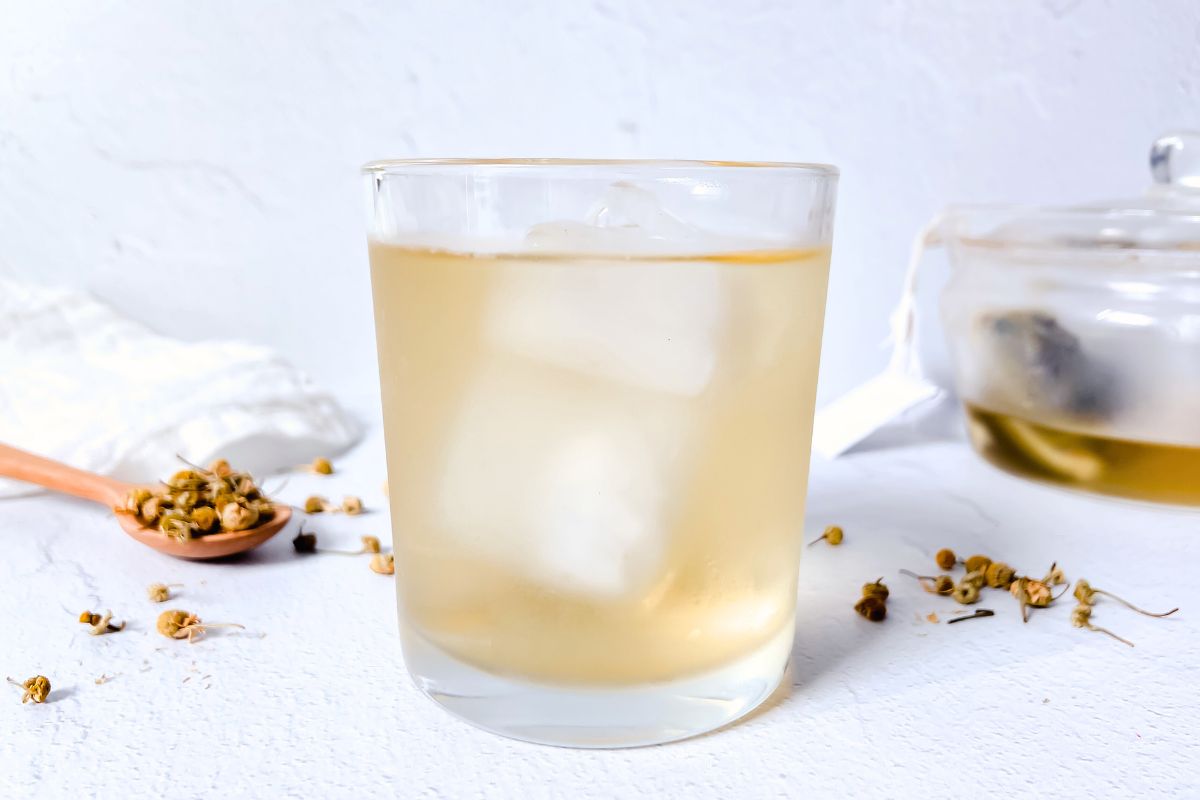Taro Milk Tea Recipe with Real Taro – VIDEO included
Have you ever wondered how to make taro milk tea from scratch, only using natural ingredients?
The taste is so much better than taro milk tea from powder! And surprisingly, it isn’t hard to do.
In this post I’ll show you how to make this popular boba tea from scratch.

With its beautiful light purple color and sweet taste, taro milk is one of the most popular beverages in boba tea shops.
You can make purple boba tea using pre-made powder (like most stores do), but did you know that you can also make taro milk using real taro?
And actually, making an authentic taro milk is quite simple.
The best part? Not only is it much healthier; the taste is also much better!
That’s why in this post I’ll show you an easy-to-follow taro milk recipe with real taro, so you can avoid the mistakes I did before finding my tricks.
This post may contain affiliate links. This means, if you make a purchase through one of these links, I may earn an affiliate commission at no extra cost to you. Here you can read my affiliate disclosure.
What is taro milk?

Taro milk is the purple bubble tea you can find in most boba parlors.
It’s a sweet beverage, usually made with taro root powder and milk.
This purple boba milk tea sometimes has additional flavorings like vanilla.
Since taro root contains purple pigments, taro milk has a signature pastel purple color.
But in most cases, this pretty light purple comes from added food coloring.
Is taro milk tea good for you?
Most milk tea recipes contain lots of sugar, so it’s recommended to keep them as a ocasional treat.
That said, real taro is quite healthy: it’s a starchy root vegetable that is often used in Asian cuisine.
It has a slightly sweet taste and a nutty flavor that may remain of sweet potatoes but with a more mellow flavor.
Some name taro “a healthier potato” because it’s an excellent source of fiber and “good” carbohydrates.
It also contains beneficial nutrients like potassium, magnesium and vitamin C, B and E. Source
Keep in mind that raw taro contains calcium oxalate, which is a toxin that causes an unpleasant numb, stinging sensation in your mouth, stomach pain and irritation.
Luckily, the calcium oxalate in taro root and leaves is neutralized when you cook them through.
What does taro milk tea taste like?
Taro milk tea may taste very different depending on where you get it.
Most people describe it as sweet, slightly nutty and creamy.
It may also remain of the remaining milk after you eat cereal with milk or cookies and cream.
In some parlors it also tastes similar to biscuits, coffee creamer or even mellow chocolate.
When you make taro milk with real taro, you’ll be able to enjoy a delightful thick, creamy texture.
Ingredients to make taro milk tea with real taro
The first time I wanted to make taro milk at home, I could only find pre-made powders that were already sweetened.
As I prefer sweetening my beverages mysel, I decided to make my own taro milk from scratch.
Another advantage of making taro milk tea with real taro is that you can turn it easily vegan (most taro milk powder contain powdered dairy) and keto.
What you’ll need

How to make taro milk if you don’t have real taro
Fresh taro isn’t exactly easy to find in regular supermarkets (I bought mine in an Asian store) so, if you want to make taro milk but don’t have any taro on hand, here are a few substitutes that you can use:
- Taro milk tea powder:
You can find taro powder in Asian stores or online. Be aware that it usually contains lots of sugar and probably little powdered taro. - Purple sweet potato powder (natural purple food coloring like this one):
Even if you use real taro, you will probably want to add some purple powder to intensify the color.
However, since the starch in taro make the drink creamier, using only purple powder will result in a different texture, so the best option is using both taro root AND purple food coloring. - Yams:
Yams are a type of sweet potato that have a purple color. While they taste slightly different, purple sweet potatoes still work fine as a substitute for taro root in this recipe.
How to make taro milk tea
Making real taro milk tea is quite simple!
And when making your taro milk at home, you may adjust the sweetness to your liking.
Furthermore, you may very easily turn it into a vegan and/or keto friendly treat!
And of course, it tastes amazing!
How to make taro milk with real taro
- Prepare taro root
Peel the fresh taro root and cut into small pieces.
Since raw taro is toxic to humans and some people may experience irritation when handling them, I recommend using gloves.
- Cook taro
Boil taro in boiling water until soft (it takes about 15-20 minutes).
Make sure the pieces are soft (taro that isn’t cooked throughout is toxic!).
- Blend
Drain the water and combine cooked taro with the rest of ingredients.
Use a hand blender or food processor to blend everything until smooth.
Optionally, add a small amount of natural purple coloring (like purple sweet potato powder) to get the signature taro milk color we know from most boba shops.
- Enjoy
Serve (optionally with tapioca pearls if you want a taro boba)

FAQs about taro milk tea
Taro milk tea doesn’t have any caffeine, unless it is mixed with some real tea (black tea, green tea, white or oolong tea for example).
But in most cases, it doesn’t actually contain tea from the Camellia sinensis plant, so it isn’t technically “tea” and it doesn’t has caffeine.
In most cases, yes.
Taro milk is a common drink in bubble tea shops, so often you’ll find it under the name of taro milk tea or even taro tea, but usually it’s a mixture of taro root with milk and sugar (without having real tea in it).
Taro has carbohydrates, but they are categorized as a resistant starch. This mean, the body doesn’t digest or absorb these carbs, so they keep you fuller for longer and may help stabilize blood sugar.
The results is that taro is considered to be beneficial for weight management, keto friendly and suitable for low-carb diets.
To make your taro milk tea keto:
-use keto friendly sweeteners like xylitol, erythritol or stevia
– choose keto-friendly plant-based milk (like almond milk or coconut milk).
Usually milk tea is best immediately after preparing it, but you can store taro milk tea from real taro for 24 hours in the fridge and it will still taste good.
No, taro and yam come from different plants.
They share some similarities:
1- Both belong to the family of sweet potatoes
2- Both are starchy root vegetables
3- Both are used in purple colored desserts
But they look and taste different.
Taro roots aren’t as sweet nor they have the same purple color intensity as ube. But manufacturers of taro milk powder add some sweeteners and coloring to it, so often it’s difficult to tell the difference between taro milk tea and ube milk tea (yam milk tea).
No, taro is the root from the tropical plan Colocasia Esculenta; ube (Dioscorea Alata) is a yam.
From the outside, taro looks brown with white stripes while ube (or purple yam) may sometimes have a purple hue.
Also, taro roots are usually rounder and ube more lengthy.
On the inside, taro is pale (sometimes with purple dots), but ube has an intense purple color.

Taro milk tea recipe with real taro
Equipment
- Small cooking pot
Ingredients
- 100 gr. taro root (pealed) 3,5 oz.
- 1¾ cups milk 350 ml.
- 2 teaspoon sugar or xylitol
- 1 teaspoon vanilla extract or vanilla honey
- ½ teaspoon purple sweet potato powder (or purple food coloring)
- black boba pearls optional
Instructions
- Peel and cut the taro root. Some people experience sensitivity against taro’s raw flesh, so you may want to use gloves.

- Cook the taro cubes in boiling water for around 15-20 minutes, until the pieces are soft. Make sure it’s well cooked, since raw taro is toxic.

- Drain the cooked taro and combine it with milk and sweetener of choice. Optionally add some vanilla extract and purple food coloring. Blend until smooth.

- You may serve it with tapioca balls to make it a purple boba tea.

Video
Notes
- Make sure your taro root is soft and cooked: raw taro is toxic, causing an unpleasant stingy feeling in the mouth, stomach pain and even respiratory difficulties.
- If you use boba, cover them with some simple syrup to prevent them to stick to one another (here is an easy recipe for sugar-free syrup)
Nutrition
And that’s how you make taro milk from scratch!
I hope you enjoy this refreshing and creamy purple bubble tea!
Looking for more milk tea recipes? Check here more recipes to make milk tea at home:







Thank you so much for this interesting article.
I had never heard of taro, but it looks great.
A friend gave me BENI IMO Powder from Okinawa and it’s color is pink-purple.
Is it the same thing?
Hi, thanks for your comment! Beni imo is a type of sweet potato, so it’s different from taro, but I use it for the color, since real taro isn’t as purple.
Great video! It was very helpful, thank you!